|
Location Noosa North Shore Equipment Zoom H4N DPA 4061 What a great way to spend the last day of the year. Anna and I went horse riding along the beach just north of Noosa on the North Shore. You have to get a ferry across the river with your car and this is where the beach highway starts and heads north. We only went just across the river to where the horse rides started and then we rode for two hours out to the beach and along. I attached the two DPA 4061 mics to my belt to see if I could capture any of the sounds of being on the horse. I knew I wasn’t likely to record much, but I thought maybe I could record some of the clinking and creaking of the saddle and other bits. Sadly this was another failed session as all I really recorded was my pouch bouncing off the mics, possibly useful for something, but not really very horsie. The ride itself was one of the best things we have done, it was so nice to ride along the beach in the surf and the sun. I hope that this is a sign of things to come for 2010, because if it is then next year is going to be a fantastic year.
I think this is a good place to say Happy New Year to everyone, I hope 2010 is a year of great opportunity for everyone and that we can all live happily and safely through another year.
0 Comments
Location Rainbow Beach Queensland Equipment Zoom H4N H2a XLR Today is our last full day with the hire car so we decided to go for a drive north. We drove through Gympie and up to an area called Rainbow Beach. This is part of the area near Fraser Island and the beaches are so huge that they also function as a highway to travel north. Only 4 wheel drive vehicles can use the beach road, but it is such a popular area that many people make use of it. The beaches themselves are really beautiful at this time of the year. We decided to go for a walk along the beach because the weather was quite cloudy. I took the hydrophone along because I have never thrown it into surf before and I was curious what sounds I would get. After walking for a while I started to drop the mic into the waters as we walked. I captured some pretty good wave sounds but I also captured a lot of noise as the undertow of the receding waves would pull the mic along on the sandy bottom, so I recorded lots of scratchy sand sound. The sand noise wasn’t really usable, but I did get lots of great wave sounds. While we were walking the sun came out and the sky cleared so we got our towels and went for a swim, the water is fantastic and warm in this area and it was nice to cool off. One of the recurring issues with recording underwater is the large extreme range of sound levels that occur. For instance a small wave will create a whoosh and some bubble sounds and be fairly quiet, however a large wave crashing is extremely loud with the hydrophone. This means I either need to constantly alter my input levels or decide I am going to try and capture either one or the other. I plan on getting an inline pad unit for my gear. This is essentially a small plug that is placed between the microphone and the recording device that reduces the input level by a certain level (in this case 20dB) with two inputs I can put the pad on one of the line in inputs and use that channel to capture the loud waves while still capturing the quieter waves with the other channel. I will need to investigate this further in the new year.
Location Noosa Queensland Equipment Zoom H4N NTG3 & DPA 4061 Single hand setup Anna and her mother have gone down to Brisbane for the day so I am going to use the time to collect a few sounds that I have been thinking about since we arrived in Noosa. Like many houses in hot climates the house here has ceiling fans in most rooms. On the high setting the fans rotate pretty quickly and one in particular sounds a little like a helicopter in stealth mode. I made sure I captured some material from different angles as the sound generated from below is quite different from when the mic is positioned above the blades. Even at right angles and close to the blades you get a different sound. This material would be perfect to use for a slow motion clip of a helicopter flying or something similar. Next it was Dotti’s turn. She doesn’t bark very often but I have captured a few barks since we came up here. I wanted to record her panting as she is a fairly large dog and with the temperature being typical summer weather she spends a lot of time panting, so I got her to sit still while I stuck a mic in front of her nose. I don’t think animals like having a big fluffy mic in their face, but she was well behaved and I got some good material. As usual capturing animal sounds is a real challenge so I will always spend the time to grab anything that might be a chance for a good recording. Location Noosa Queenland Equipment Zoom H4N NTG3 One day till Christmas and we are up in Noosa for a couple of weeks. The year is nearly done and its great to get out of Melbourne for a while. We are staying with Anna’s mum in her lovely house, and its great to see Oscar the cat again. This time there is a new member of the family as Anna’s mum is helping to train a guide dog puppy so we have Dotti the Golden Retriever as well. I am going to make sure I record some sounds from Dotti as she is lively happy dog and I am sure I can get her to bark for me. While on the subject of animals I have also recorded one of my other favourite sounds from Noosa. In this area it is common to find Geckos living around people houses. Geckos are small lizards with sticky pads on their feet that allow them to walk up walls and upside down on ceilings. They are really cute and are super helpful because they eat insects. They also make a really cute chirping sound when they talk to each other. I really like the sound they make and its one of the things that reminds me how much I like living in an area with natural animal sounds like birds and insects. Sadly where we live in Melbourne all we get is traffic noise. Hopefully sometime soon we will be able to move back to somewhere with less traffic and more nature. Location Noosa Queensland Equipment Roland R09 Handheld This was our last full day in Queensland before we relocated back to Melbourne for our new jobs. We decided to go for a walk through the national park and along the coast. The weather was pretty dark and the wind was very strong. The walk was great especially watching the waves run along parallel to the coast. At one point we came across some pretty big waves crashing on the rocks below. I only had the R09 on me but I still got a nice recording of the heavy waves as they crashed. Very luckily we were in an area protected from the wind as I got no wind noise coming through. Location Noosa Queensland Equipment Zoom H4 MKH60 Boom Pole Setup With only a couple of days left in Noosa I wanted to capture a few last sounds before we left, so I went out for a walk with my gear. I knew there were some tennis courts nearby so I headed in that direction as I don’t have any tennis sounds yet. It was juts the local tennis club and they were happy for me to stand around with a microphone for a while. (You would be amazed how uncomfortable some people get when there is a mic around; these guys were cool with it) I got some really good material because there were both men and women playing so I managed to get some good sounds of people exerting them selves as they went for shots or played the more powerful shots. Of course I also got the impacts of the tennis balls on the racket, court and net and the typical squeaky shoes. I must have spent close to an hour there and I got into watching a couple of the matches as the players were really pretty good. On my way out from the tennis courts I noticed a guy messing
around with the back of this unusual truck. The sign on the truck read “Concrete mixing” so I guess that’s what it was, but he was actually cleaning the system out after having used it. It was making some cool grinding and clunking sounds as the pump cycled without any concrete in it. He was also using a long metal pole to dislodge the built up concrete. Very interesting looking gear and made some good sounds. Once again I just happened to be in the right place at the right time for that one. Both the tennis and the concrete mixer were pretty straight forward to record as I didn’t have much background sound to worry about as they were in a quiet part of Noosa. It was really just a case of position myself where it sounded good and point the shotgun mic at the target. I wish all recording sessions were this easy. Location
Noosa Queensland Equipment Roland R09 and a zip lock bag Moving back to Melbourne next week means we don’t have much time left to enjoy the beach, and as Anna has nearly finished her studies for the year we thought we’d head down the beach for a swim. I thought I would try one last time to do some underwater recording. I’ve decided the waterproof bag is a better choice than the zip lock bag as the type of plastic produces less noise when it moves. The main issue I had last time was that the sound of the waves moving was just way too loud even with the input set to the absolute lowest level. This time I tried to stay in much calmer water and limit my movements to slow and consistent moves. The other issue was if the unit was taken too deep then there seemed to be very little to record. The movement of water and waves were the main things to capture, but also the sounds that maxed out the unit the most. Today I tried to keep the unit just below the surface of the water to try and capture the waves without peaking. Another difficult aspect is that there is no way for me to monitor what is being recorded until I get home and upload the files to my laptop. This time was much more successful than my previous attempts. As a general rule when recording sound underwater, place the recording device much further from the sound source than you would expect to. Splashes and general body movement can be captured quite well, but if the unit is too close it will peak every time. This time about 25% of the material I recorded was useful which I was pretty happy with. I might do some more tests in the future in a normal swimming pool to see what can be achieved there. Location Yandina Queensland Equipment Zoom F4 Sennheiser MKH 60 Boom pole array I finally managed to get myself out of bed early enough to record some of the early morning bird sounds around the Noosa area. I am terrible at waking up early and even when I have a really good reason to do so I find it hard. Today I was up at 4.30am and headed out to walk around the local area. As I had observed before many of the birds in Noosa seem to live around the residential areas rather than in the national park. I suspect it’s because the trees in peoples gardens might be more desirable to them, and also the possibility of food being available where people are living. Either way it had been difficult to record the many birds during the day as people and cars usually contaminated the recordings. 4.30am gave me far fewer people to compete with. I started out just walking around the residential streets of Noosa Heads. There were quite a few Brush Turkeys wandering around. The turkeys don’t really have any bird calls, but they do produce a low grunting sound when they run around. They often fight amongst themselves so it was easy to capture some of the sounds as they wandered the streets. I also got some nice clean recordings of a family of magpies. The adults were making the typical magpie calls while the young were making their usual pleading squawk when they want to be fed. While magpies are certainly not limited to Noosa this was the first chance I had had to get a clean recording the usual urban habitats that I see them in are far too noisy. 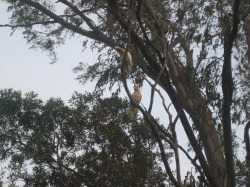 Noosa Corellas Closer to the waterfront I saw what I initially thought were Sulphur Crested Cockatoos, but I found out later they were Corellas. There were quite a few of them up in a large tree and I recorded a fair bit of material. A lot of it is mixed with Lorikeets as well, but I still got some good samples. I managed to get some other bird sounds that I have yet to identify, but I unfortunately missed out on recording the green catbirds that are in the area. They produce a sound that is a lot like a human baby crying. I did hear one way off in the brush, but I had no way to get closer and it was too far off to be worth recording. That one can go on the wish list for later. Overall it was an excellent mornings recording and well worth the pain of having to get up early. Anyway after I got back we went to the Market and I had Dutch pancakes for breakfast so that was good too. Location
Noosa Queensland Equipment Zoom F4 Sennheiser MKH 60 Boom pole array Today I wanted to grab the last few sounds to complete the series for the car we had been using up in Noosa. As we were driving a 5 year old Subaru Liberty I felt it was the perfect car to get a full range of sounds on. Subaru’s in general and this model in particular is a very popular car both in Australia as well as in other countries so it was a good generic modern car sound to have in the library. I am very disappointed to realize that I am not going to have time to record our neighbors old Chevy and his Harley bike. I guess I am going to have to put a Harley down on the list for a future session somewhere. Location Yandina Queensland Equipment Zoom F4 Sennheiser MKH 60 Boom pole array And Roland R09 Handheld After a successful day at the rifle club it was suggested I come down to the range again the next day as there are three other firearms clubs that all meet on Sundays. I spent most of the day with the North Arm, Sporting Shooters, Shotgun association and Pistol clubs, and I got to record things I would not have dared to dream of. I started with the Sporting shooters club. They have a large range of rifles being used at ranges up to about 100 meters. (The previous day with the 303 was 750 meters!) There was a range of the usual rifles you would expect at a range. .22, 222, .308 as well as air guns and I got the opportunity to record all of these. I also got the opportunity to record 4 different black power flint locks which had fantastic sounds. They were all reproductions of American flintlock rifles from the 1800s but a great deal of detail had gone into making them true and accurate reproductions. The sound of these large calibre muzzle loaded black powder firearms is so different to modern weapons, and from my point of view far more interesting. A flintlock fires its round by having a small spring-loaded hammer released when the trigger is pulled. The tip of the hammer holds some flint that sparks when the hammer hits. The spark ignites the powder which then explodes and projects the round out of the barrel. In modern fire arms all of this happens inside the shell case and so there is just a single “bang” sound. With a flintlock you can actually hear the individual elements. The hammer impact, the ignition of the powder on the receiver plate and the final discharge of the main powder as the weapon fires can all be heard (although in very quick succession) This results in a great sound when the weapon is discharged. I was also lucky enough to record an old 1930’s Russian bolt action rifle from World War Two. This thing had a monstrous sound as it was fired. I spoke to the owner who kindly gave me a lot of information. This model was the rifle made famous in the Hollywood movie Enemy at the gate as the Russians main sniper rifle. It is a very accurate weapon over quite long ranges. I also managed to record some lever action rifles which are like the old style cowboy rifles. After the Sporting Shooters range, I moved on up to the Shotgun Association range. They were having a competition day and so I went along with one group as they moved through the different stations. At each point I would set up the R09 a little back from the shooters position, mainly to avoid it overloading the levels, but also to get a less direct sample. Again I initially used the MKH60 to try and capture both loading and firing sounds by quickly switching the input gains from minimum to maximum. In some instances I would leave the levels at max to capture all the extraneous sounds of the gun knowing I would need to discard the gun firing sound as they would be much too loud. It becomes a bit of a balancing act when recording sounds with such great extremes of levels. The advantage I had was that by traveling along with a group over the better part of an hour so I had plenty of time to record the material I needed. It is important to keep this in mind when recording. Not every single sound you record needs to be perfect and usable. If you have already recorded a shotgun being fired 10 times and you know you have at least a few nice clean samples with good levels, then you have the freedom to set the levels to record other aspects of the gun such as loading, cocking or just subtle general movements. Setting the levels high enough to capture these aspects will more than likely result in the levels overloading whenever the gun is fired, but as you already have firing sounds this should not be an issue. Time is the real issue when recording. If it is a random opportunity to record something you would otherwise not get a chance to record then you set the levels as best as time permits and hope for the best result. If however you know that the sound will be reliably replayed over a reasonable length of time, then you have the flexibility to be careful and even creative in how you go about recording things. On the way back down to the clubhouse after the competition I realized I had accidentally captured far more than I originally thought. As the competition consisted of several groups’ rotation through several firing points, it meant that there were shooters firing from many different locations at all times. This meant that while I had been concentrating on the group I was accompanying I had also been simultaneously recording all the other groups. This meant that I captured the sounds of shotguns being fired at just about every range from a couple of inches through to over 100 meters away. This will allow me to add a far greater depth to the shotgun section of the library. As they were all 12 gauge guns I effectively have a very big range of recording of the same sound. This would normally be a very tricky and time consuming result to achieve. Again it’s often the unexpected that gets you the best results. Finally I made my way to the pistol range. It was getting well into the afternoon at this stage and so there were not many people left. One gentleman was very helpful and fired a full clip down range in rapid fire mode allowing me to capture the sounds. I recorded semi automatic pistol at 38 Calibre as well as three revolvers. Finally one of the committee members was preparing his pistol for an up coming competition shoot. His gun was a Tanfoglio 38 super semi automatic and it sounded like a howitzer. The first time he fired the gun I actually felt the shockwave hit me physically. Even with both earplugs and my headphones on (signal switched off) this gun was very loud when fired. I was also able to capture all the Foley of the pistol being loaded cocked and unloaded which was great.
All up this weekend has been a fantastic opportunity to finally record some firearms and get a better feel for what is involved with doing so. There are many obstacles when recording firearms especially when at a range. I would have loved to have carefully record all the Foley sounds for every weapon on the day, but this has issues in itself. Firstly with all the shooting going on it is very difficult to get a nice clean sample of anything else. A weapon discharge is such a short sharp sound that it is often possible to capture good samples even with other guns being fired, but loading, unloading and other Foley sounds are much quieter and can take more time to complete. This means you really need to capture these sounds offsite somewhere else. This could involve organizing the gun owners to meet you, having a suitable location and all of this mean more time especially for the gun owners. The advantage of what I was doing all weekend was that I was recording people doing what they would be doing normally at a range, shooting firearms. Occasionally I would ask them some questions about their firearms, but generally I did not interfere with their day. This makes people far happier to have you around, but if I had asked them to come in especially with their guns to stand around while I recorded all the Foley, this is far less convenient for them and is asking them to sacrifice their time for my benefit. I try as much as possible to record what I can without needing people to go miles out of their way to help me. Sometimes I’m lucky and people will offer the extra time themselves. Until I can afford to pay people for their time I think this is the best balance of capturing the sounds I want without taking up too much of people’s time. www.northarmshotgun.com.au/ |
AuthorStephan Schütze has been recording sounds for over twenty years. This journal logs his thoughts and experiences Categories
All
Archives
April 2019
|
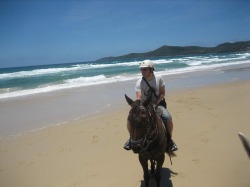
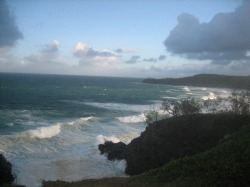
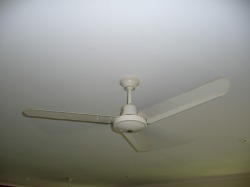
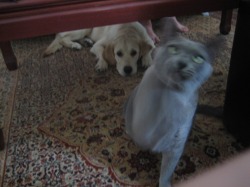
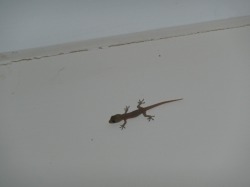
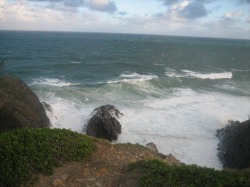
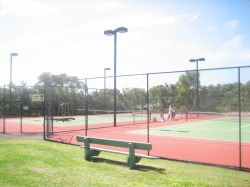
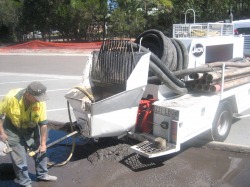
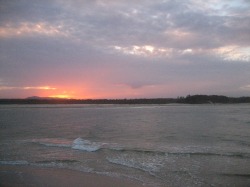
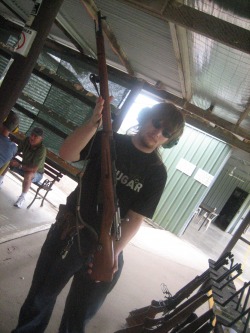
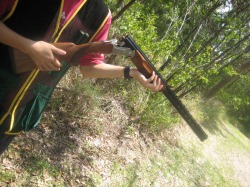
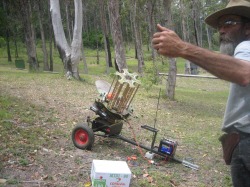
 RSS Feed
RSS Feed
